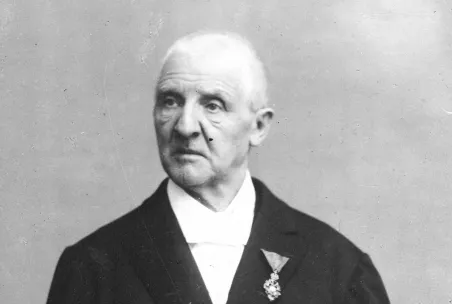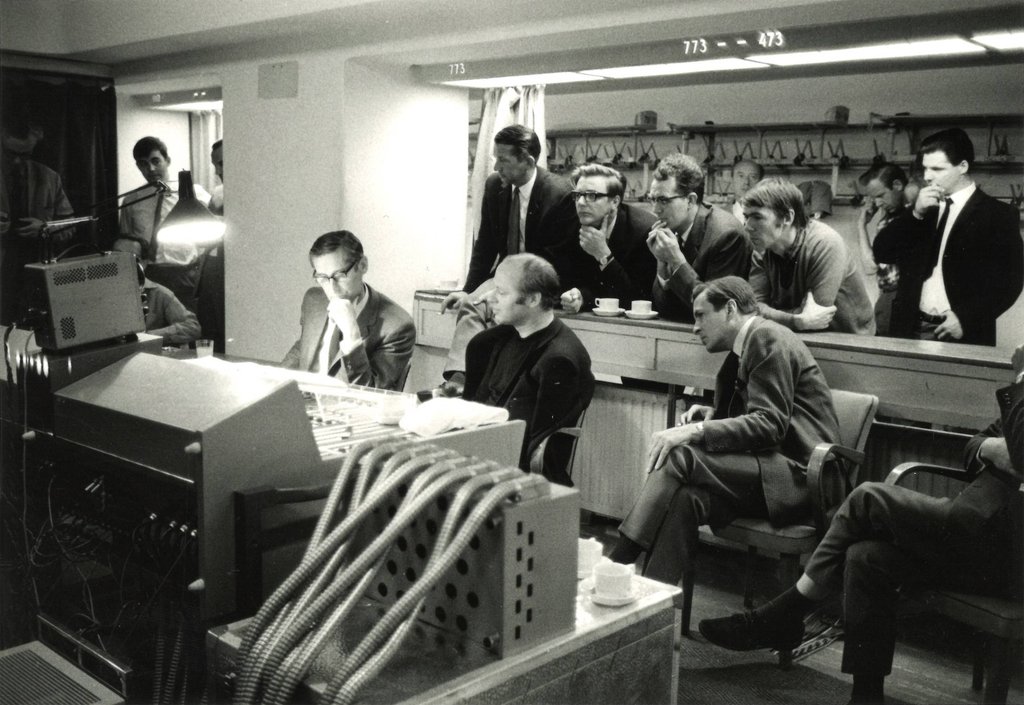
Anton Bruckner
When Anton Bruckner died in 1896 in Vienna, his funeral came close to being a state funeral. He had been an esteemed member of society, a teacher at the conservatory, a university professor, and, above all, an organ virtuoso. Nevertheless, during his lifetime and for a long time afterward, Bruckner received little appreciation as a composer. The Concertgebouw Orchestra played an important role in advocating for his work.
Early life
Josef Anton Bruckner was born on 4 September 1824, in Ansfelden near Linz, Austria. His father was a schoolmaster and organist. Bruckner was an able violin player by the age of four and mastered the church organ by age ten. Following his father’s death, Bruckner was sent to the Augustinian monastery and school of St. Florian. There, he received an education, including music lessons, and served as a choir boy. He later trained as a teacher in Linz, returning to teach at St. Florian in 1845 where he stayed for around ten years. In 1850 he also became the organist at the monastery, concurrently developing his musicality through self-study and classes with local musicians.
Organist
In 1855, encouraged by friends, Bruckner successfully applied for the position of cathedral organist in Linz, which gave him the opportunity to dedicate himself fully to music. He engaged in intensive studies in harmony and counterpoint with the Viennese theoretician Simon Sechter, completing this education in 1861. Subsequently, he studied with theatre conductor Otto Kitzler, who introduced him to the works of Richard Wagner. Bruckner was also impressed by the compositions of Franz Liszt and Hector Berlioz. Inspired by these modern composers, Bruckner developed his mature and original compositional style, marked by his Mass in D minor (1864), composed at the age of forty.
In 1866, Bruckner completed his First Symphony. Towards the end of that year, he suffered a nervous breakdown, for which he stayed in a sanatorium for a few months. Throughout his life, the composer struggled with neuroses, melancholy and depression.
In 1868, Bruckner followed in the footsteps of his late teacher Sechter as a professor of harmony and counterpoint at the Vienna Conservatory. However, establishing himself as a composer in Vienna proved challenging. The city was embroiled in an aesthetic conflict between the acolytes of Brahms and Wagner. Unfortunately for Bruckner, the influential critic Eduard Hanslick, a staunch Brahms supporter, did not take well to Bruckner’s admiration for Wagner.
Breakthrough as a composer
Despite these hurdles, Bruckner’s academic career flourished. In 1875, he secured a position at the University of Vienna, despite protests from Dean Hanslick. His breakthrough as a composer finally came in 1884 with the success of his Seventh Symphony. This symphony demonstrates his compositional style: with lengthy formal sections sometimes exceeding twenty minutes, Bruckner transforms this traditional form into an expressive journey, exploring tonality in great detail through his mastery of counterpoint and orchestration.
Anton Bruckner passed away in Vienna on 11 October 1896, leaving his Ninth Symphony unfinished. He was buried in St. Florian, near the organ he played so masterfully.

Bruckner and the Concertgebouw Orchestra
Bruckner has the power to make time stand still and transport listeners to another world with his majestic symphonies. Nonetheless, appreciation for his work was slow to develop during his lifetime and for many years thereafter. His musical penchant for drawing upon compositional devices of the past while simultaneously pushing across new boundaries often led to misinterpretation and resistance.
After his death, the Concertgebouw Orchestra became one of the few orchestras to perform Bruckner’s works on a regular basis. From the 1930s onward, thanks to important champions such as chief conductors Eduard van Beinum, Bernard Haitink, and Riccardo Chailly, Bruckner’s music gained increasing recognition both in the Netherlands and internationally. Today, Bruckner’s music is a core part of the Concertgebouw Orchestra’s repertoire.
